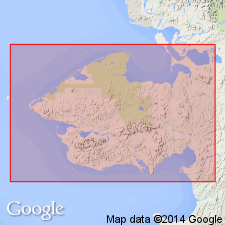
- Usage in publication:
-
- Nome series*
- Modifications:
-
- Named
- Dominant lithology:
-
- Limestone
- Schist
- AAPG geologic province:
-
- Seward Peninsula province
- Alaska West-Central region
Summary:
Occupies much of greater part of area mapped on Seward Peninsula, west-central AK. Typically developed in region lying to south of Kigluaik Mountains and of Bendeleben Mountains. "Can hardly be considered a stratigraphic unit, as lithological constitution of its beds is rather heterogeneous." p.29. Made up of limestone, graphitic mica, and calcareous schists with many greenstone intrusives and some chloritic schists of indeterminate origin. Thickness is 5000 to 6000 ft. Overlies Kuzitrin series (new). North of Port Clarence thin-bedded, earthy limestone (probably part of series) yielded some fossils of Ordovician age. Correlated with limestones regarded as of Mesozoic age by Mendenhall. Geological reconnaissance map shows age of Nome series as Paleozoic(?) and Mesozoic.
Source: GNU records (USGS DDS-6; Menlo GNULEX).
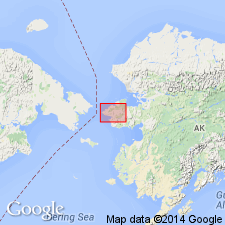
- Usage in publication:
-
- Nome series*
- Modifications:
-
- Revised
- Age modified
- AAPG geologic province:
-
- Seward Peninsula province
- Alaska West-Central region
Summary:
Divided into 2 conformable groups (ascending): Port Clarence limestone and Kugruk group (both new) in northwestern part of Seward Peninsula. Age of Port Clarence limestone is Early Silurian based on biostratigraphic dating by Charles Schuchert of fossils collected from unit. Kugruk group yielded fossils only at summit of Baldy Mountain; Charles Schuchert identified coral found here as of Late Silurian or Devonian age. Correlation table gives age of series in area of report as Early and Late Silurian.
Source: GNU records (USGS DDS-6; Menlo GNULEX).
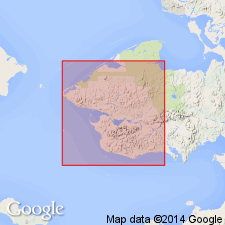
- Usage in publication:
-
- Nome group*
- Modifications:
-
- Redescribed
- Age modified
- AAPG geologic province:
-
- Seward Peninsula province
- Alaska West-Central region
Summary:
"Nome series" of Brooks (1901) is redescribed as Nome group, although the group is not regarded as stratigraphic unit. Divided into three parts: lower wide belt south of Kigluaik Mountains of several 1000 ft of schists of various types, overlying limestone called Port Clarence limestone, and in region north of Kigluaik and Bendeleben Mountains, the "Kugruk group" which is correlated with Port Clarence and underlying schists. Clay slates and phyllites of York region described and separately mapped. Maps show undifferentiated limestone, slate and schist including quartzites and schists (Kuzitrin formation) and Port Clarence limestone of Nome group as Silurian and Ordovician age.
Source: GNU records (USGS DDS-6; Menlo GNULEX).
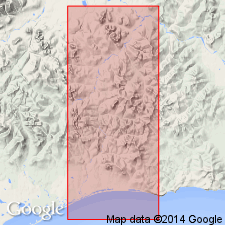
- Usage in publication:
-
- Nome group*
- Modifications:
-
- Revised
- AAPG geologic province:
-
- Seward Peninsula province
- Alaska West-Central region
Summary:
Formations named and described in Solomon and Casadepaga quads as part of Nome group include (older to younger): Solomon schist, Sowik limestone, Hurrah slate, Puckmummie schist, and Casadepaga schist (all new). Ages of these units range from pre-Ordovician to post-Ordovician(?) as shown on map legends of quads.
Source: GNU records (USGS DDS-6; Menlo GNULEX).
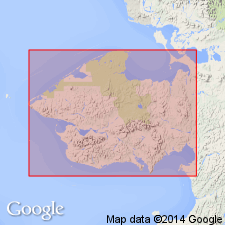
- Usage in publication:
-
- Nome Group*
- Modifications:
-
- Age modified
- AAPG geologic province:
-
- Seward Peninsula province
- Alaska West-Central region
Summary:
Age is Jurassic (metamorphic age). [see Armstrong and others, 1986]. Protolithic age is regarded as late Precambrian to middle Paleozoic.
Source: GNU records (USGS DDS-6; Menlo GNULEX).
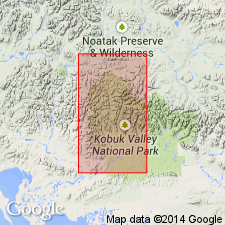
- Usage in publication:
-
- Nome Group
- Modifications:
-
- Geochronologic dating
- AAPG geologic province:
-
- Seward Peninsula province
- Alaska West-Central region
Summary:
Nome Group has protolithic age of "latest Precambrian to early Paleozoic" (approximately 720 to 360 Ma). Blueschists formed in Jurassic (metamorphic age) time (prior to approximately 160 Ma.)
Source: GNU records (USGS DDS-6; Menlo GNULEX).
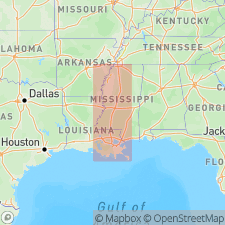
- Usage in publication:
-
- Nome Complex*
- Modifications:
-
- Revised
- Dominant lithology:
-
- Schist
- Dolomite
- Marble
- AAPG geologic province:
-
- Seward Peninsula province
- Alaska West-Central region
Summary:
Pg. 3-5, 41+ (Table 1, 2, App.), geol. maps. Nome Complex. To conform with modern stratigraphic nomenclature (NACSN, 2005), Nome Group is revised to Nome Complex. Includes rocks that exhibit a common set of structural and (or) metamorphic features. Bulk of Nome Complex is blueschist and greenschist facies. Subdivided into 3 informal parts, stratigraphic relations uncertain: (1) layered sequence, chiefly schist, incl. formal Casadepaga Schist; (2) scattered metacarbonate rocks, chiefly dolostone; and (3) metaturbidites, chiefly marble, schist, and metalimestone. Protolith age is considered Neoproterozoic to late Paleozoic (Permian), based on geochronology (U-Pb zircon analyses and detrital zircon analyses) and fossils (conodonts). Peak metamorphism occurred during the Jurassic, based on geochronology (Ar/Ar, K-Ar, Rb-Sr analyses).
Source: Publication.
For more information, please contact Nancy Stamm, Geologic Names Committee Secretary.
Asterisk (*) indicates published by U.S. Geological Survey authors.
"No current usage" (†) implies that a name has been abandoned or has fallen into disuse. Former usage and, if known, replacement name given in parentheses ( ).
Slash (/) indicates name conflicts with nomenclatural guidelines (CSN, 1933; ACSN, 1961, 1970; NACSN, 1983, 2005, 2021). May be explained within brackets ([ ]).

